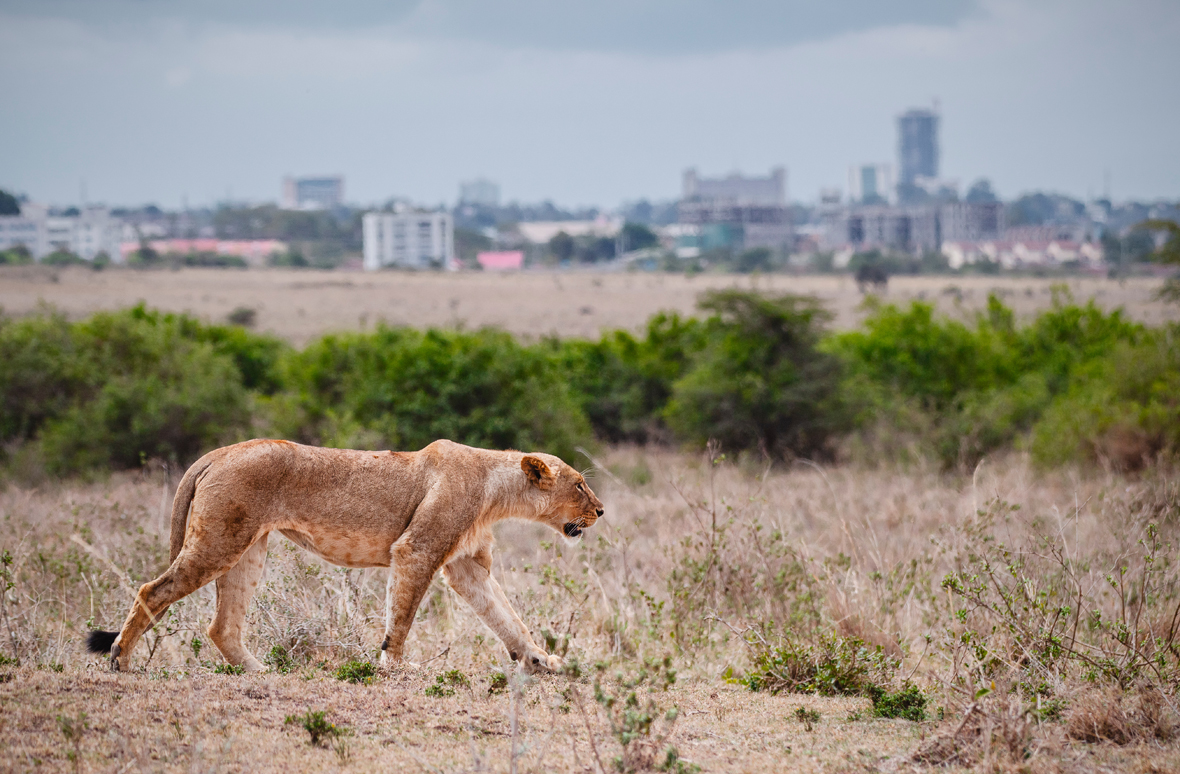World Lion Day: AWF's Holistic Approach to Lion Conservation

Lioness walking through Nairobi National Park
Over the past 25 years, Africa's lion population has experienced a devastating decline, with the International Union for Conservation of Nature (IUCN) estimating that only 23,000 to 39,000 remain in the wild. Habitat loss, escalating human-wildlife conflict, and poaching have pushed these majestic big cats to the brink of extinction. Today, lions face a growing threat as human populations expand and compete for resources, further jeopardizing their survival.
The IUCN Red List has classified the lion as vulnerable since 1996. While the subspecies Panthera leo melanochaita in southern and eastern Africa fares relatively well, the Northern Lion (Panthera leo leo) in West and Central Africa faces a dire situation, listed as Critically Endangered in West Africa.
"The Africa Wildlife Foundation (AWF) is actively addressing the numerous threats facing lions through partnerships with organizations and by collaborating with local communities living near protected areas. World Lion Day serves as a reminder of the urgent need to protect these iconic big cats."
Nakedi Maputla, a senior conservation scientist at AWF, explains, "The biggest threats to lions are habitat loss and prey depletion, which lead to increased human-wildlife conflict. When lions lose their natural prey, they may prey on livestock, resulting in retaliatory killings by pastoralists."
Snaring, an indiscriminate and often lethal hunting method, poses a significant threat to lion populations. Poorly planned development, such as lodges built on lion breeding grounds, further exacerbates the problem by disrupting their natural behavior, fragmenting their habitat, and exposing vulnerable cubs to increased dangers. The illegal wildlife trade, driven by demand for lion bones in countries like Laos, China, and Vietnam, also plays a devastating role in the decline of lion populations (CITES 2007-2016).
Maputla states that these countries have a particularly high demand for lion bones, which they use as substitutes for tiger bones.
He adds, "Another factor is the traditional belief among some Africans that lions can confer dominance, and traditional healers also use lion bones in their practices."
He observes that East and Southern African countries have achieved greater success in lion conservation due to land-use planning favoring connected protected areas, vast landscapes that support diverse prey populations, and policies promoting high returns for conserving wildlife.
AWF's holistic approach to lion conservation
AWF employs a multi-faceted approach to lion conservation, working closely with local communities and partners to implement effective strategies. This includes collaborating with organizations like Wildlife Conservation Action, led by Dr. Moreagels Mbizah in the Middle Zambezi Valley Landscape, and the University of Wyoming, led by Douglas Kamau in the Tsavo-Mkomazi Landscape, as well as supporting national conservation agencies like the Kenya Wildlife Service and the Uganda Wildlife Authority.
One successful initiative is the construction of lion-proof bomas in Manyara Ranch, Tanzania, which has stabilized the lion population in the area. In Tsavo-Mkomazi, Kenya, AWF has supported the development of a community guidebook on best practices for coexisting with lions.
AWF also utilizes tracking collars to monitor lion movements and gather crucial data for adaptive conservation strategies. This information allows conservationists to better understand lion behavior, habitat use, and predator-prey interactions, leading to more informed decision-making and effective conservation measures.
The Future of Lion Conservation
To further advance lion conservation, Nakedi emphasizes the need for increased collaboration through regional bodies, country-to-country partnerships, NGOs, local communities, and academic institutions under the leadership of IUCN’s Species Survival Commission.
He emphasizes the need for improved spatial planning to safeguard large areas of land for lions and other wildlife. Additionally, there is a necessity for poverty alleviation programs to enhance the living standards of communities residing near lion habitats. These habitats create functional ecosystems from which we obtain environmental and ecosystem services.
"Poor communities that live close to wildlife need to see wildlife as an asset and conservation plans must be centered around them and their well-being," Nakedi states.
"Traditional conservation often excluded these communities, but we have made progress to ensure their benefit and ownership."
AWF has been a pioneer in this area through conservation enterprises, such as tourism lodges, that benefit local communities. However, Nakedi acknowledges that "tourism alone isn't enough, as seen during COVID-19. There are still many improvements needed along the conservation enterprise value chain."
Looking towards the future, Nakedi sees promising opportunities in innovative financing mechanisms like biodiversity and carbon credits, which could provide sustainable funding for conservation efforts.